Amaranth
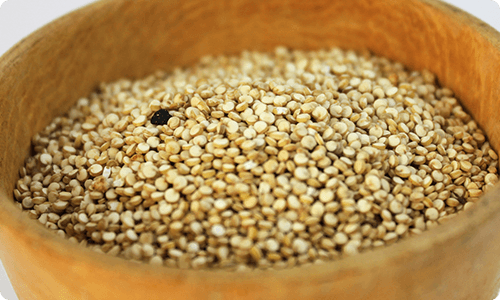 A staple grain for over 8,000 years, the yield of amaranth is similar to maize or rice. These grains are most commonly simmered and added to flour, cereals, salads, and soups. It is exceptionally high in protein as well as fiber, vitamin B, folate, manganese, magnesium, phosphorus, and iron. Food For Life uses organic sprouted amaranth to create healthy Genesis 1:29 breads and English muffins.
A staple grain for over 8,000 years, the yield of amaranth is similar to maize or rice. These grains are most commonly simmered and added to flour, cereals, salads, and soups. It is exceptionally high in protein as well as fiber, vitamin B, folate, manganese, magnesium, phosphorus, and iron. Food For Life uses organic sprouted amaranth to create healthy Genesis 1:29 breads and English muffins.




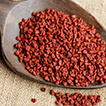
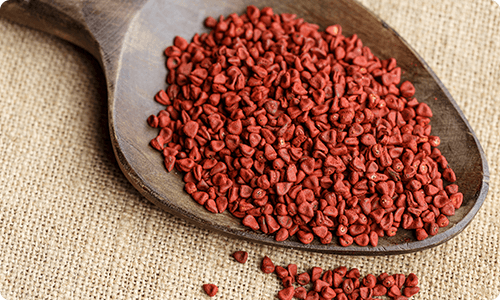 Stemming from the achiote tree, annatto seeds are a colorful, healthy, and nutritious addition to the diet. Annatto seeds are grown in South and Central America, and they have been used for centuries as a natural food coloring and preservative, especially in Spanish rice. The vivid red color of the seeds comes from carotenoids, which are plant pigments found in the seed coating. Annatto seeds are high in tocotrienol, a form of vitamin E.
Stemming from the achiote tree, annatto seeds are a colorful, healthy, and nutritious addition to the diet. Annatto seeds are grown in South and Central America, and they have been used for centuries as a natural food coloring and preservative, especially in Spanish rice. The vivid red color of the seeds comes from carotenoids, which are plant pigments found in the seed coating. Annatto seeds are high in tocotrienol, a form of vitamin E. 
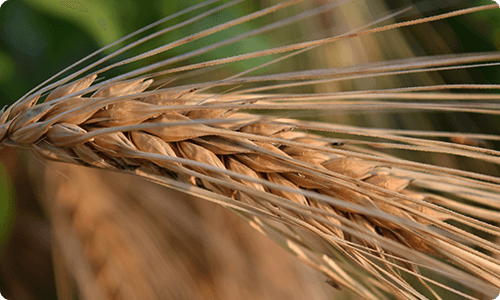 Part of the grass family, barley grows in 100 countries and is one of the most commonly used cereal grains after wheat, corn, and rice. Every year, barley is used as an essential ingredient to make bread, casseroles, cookies, soups, and stews. Malted barley is also used as a sweetener. It is filled with nutrients, vitamins, and minerals such as dietary fiber, niacin, vitamin B, thiamin, riboflavin, manganese, selenium, phosphorus, and copper.
Part of the grass family, barley grows in 100 countries and is one of the most commonly used cereal grains after wheat, corn, and rice. Every year, barley is used as an essential ingredient to make bread, casseroles, cookies, soups, and stews. Malted barley is also used as a sweetener. It is filled with nutrients, vitamins, and minerals such as dietary fiber, niacin, vitamin B, thiamin, riboflavin, manganese, selenium, phosphorus, and copper.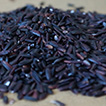
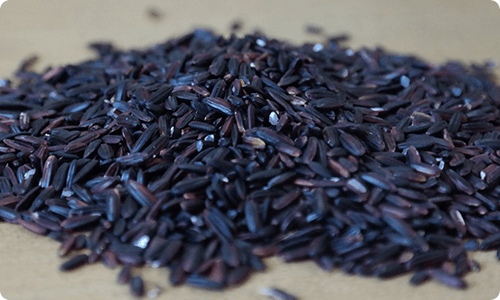 Part of the grain family, this rice is the most nutritious of the rice varieties. Black rice was once reserved for Chinese royalty, but is gaining international recognition for its health benefits. Black rice is a great alternative to white rice because of its nutritious properties. This ancient grain is full of antioxidants, vitamins, and nutrients that help support a healthy immune system. The nutrients in one cup of black rice include 18 amino acids, iron, zinc, copper, carotene, and fiber. Similar to other rice grains, black rice contains no gluten.
Part of the grain family, this rice is the most nutritious of the rice varieties. Black rice was once reserved for Chinese royalty, but is gaining international recognition for its health benefits. Black rice is a great alternative to white rice because of its nutritious properties. This ancient grain is full of antioxidants, vitamins, and nutrients that help support a healthy immune system. The nutrients in one cup of black rice include 18 amino acids, iron, zinc, copper, carotene, and fiber. Similar to other rice grains, black rice contains no gluten.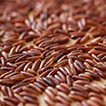
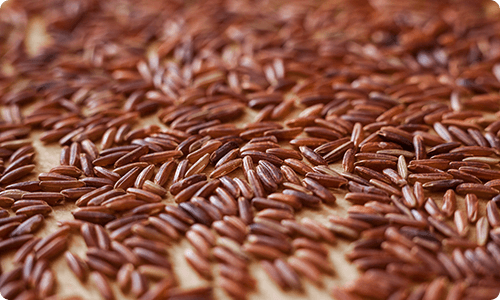 Often grown in flooded fields, brown rice is a whole grain rice that is much healthier than white rice. Brown rice is often used as a nutritious alternative for popular rice dishes such as vegetable bowls or rice cakes. However, it can also be ground up into brown rice flour that can be used for breading, thickening sauces, and gluten free baking. Because it does not go through the milling and polishing process, it retains many of its nutritional value. Rich nutrients in brown rice include calcium, iron, magnesium, manganese, phosphorous, potassium, selenium, vitamin B, vitamin E, and vitamin K. It’s also a great source of essential fatty acids, protein, and fiber.
Often grown in flooded fields, brown rice is a whole grain rice that is much healthier than white rice. Brown rice is often used as a nutritious alternative for popular rice dishes such as vegetable bowls or rice cakes. However, it can also be ground up into brown rice flour that can be used for breading, thickening sauces, and gluten free baking. Because it does not go through the milling and polishing process, it retains many of its nutritional value. Rich nutrients in brown rice include calcium, iron, magnesium, manganese, phosphorous, potassium, selenium, vitamin B, vitamin E, and vitamin K. It’s also a great source of essential fatty acids, protein, and fiber.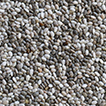
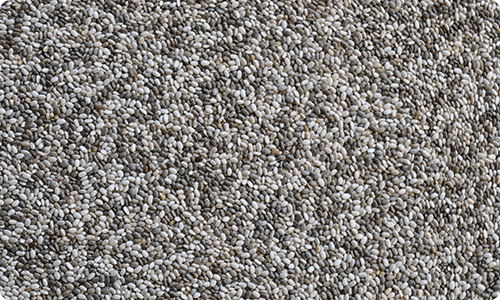 Also known as Salvia Hispanica, chia is most commonly grown for its seeds. Used in breads, muffins, and cereals, these tiny seeds are loaded with tons of nutritional properties and will make you feel full for longer. They contain dietary fiber, protein, manganese, phosphorus, calcium, and zinc. However, they are most commonly known for being immensely rich in omega-3 fatty acids.
Also known as Salvia Hispanica, chia is most commonly grown for its seeds. Used in breads, muffins, and cereals, these tiny seeds are loaded with tons of nutritional properties and will make you feel full for longer. They contain dietary fiber, protein, manganese, phosphorus, calcium, and zinc. However, they are most commonly known for being immensely rich in omega-3 fatty acids.
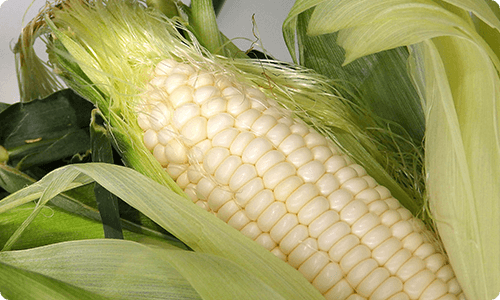 Also known as maize, this cereal grain has been a prominent means of food in civilizations for thousands of years. This diverse grain plant has been used to make corn on the cob, popcorn, cornmeal, corn muffins, corn bread and more. Most of corn’s nutritional properties are derived from the kernel such as vitamins A, B, C, E, and other minerals. It also contains fiber, magnesium, phosphorous, and thiamin.
Also known as maize, this cereal grain has been a prominent means of food in civilizations for thousands of years. This diverse grain plant has been used to make corn on the cob, popcorn, cornmeal, corn muffins, corn bread and more. Most of corn’s nutritional properties are derived from the kernel such as vitamins A, B, C, E, and other minerals. It also contains fiber, magnesium, phosphorous, and thiamin.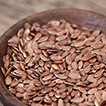
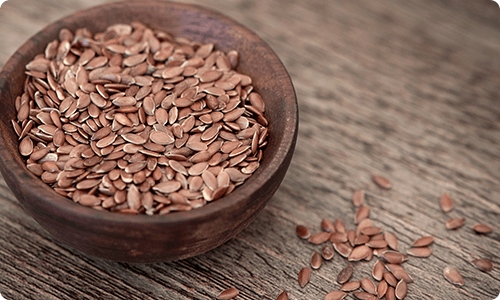 Sometimes called linseeds, these small, tan seeds have been called the world’s first cultivated superfood. They have been used to make seasonings, flax oil, paper, and textile linens. The most notable trait of flax seed is that they are the richest sources of plant based omega-3-fatty acids in the world. They are loaded with nutritional elements such as linolenic acid, fiber, protein, thiamin, vitamin B6, manganese, and magnesium.
Sometimes called linseeds, these small, tan seeds have been called the world’s first cultivated superfood. They have been used to make seasonings, flax oil, paper, and textile linens. The most notable trait of flax seed is that they are the richest sources of plant based omega-3-fatty acids in the world. They are loaded with nutritional elements such as linolenic acid, fiber, protein, thiamin, vitamin B6, manganese, and magnesium. 
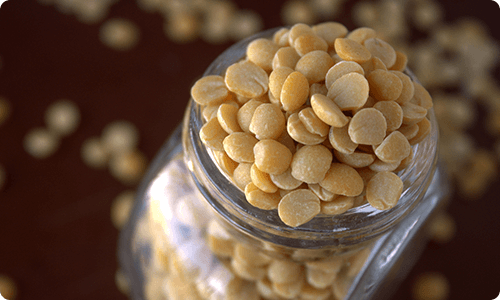 Classified as legumes, lentils have been referenced as far back as the Bible. These seed-filled pods are often served with rice, as well as added to soup and bread and are incredibly nutritional. They contain tons of fiber and are mostly carbohydrates and proteins with virtually no fat. They are also a great source of micronutrients such as vitamins and minerals.
Classified as legumes, lentils have been referenced as far back as the Bible. These seed-filled pods are often served with rice, as well as added to soup and bread and are incredibly nutritional. They contain tons of fiber and are mostly carbohydrates and proteins with virtually no fat. They are also a great source of micronutrients such as vitamins and minerals. 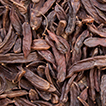
 Part of the legume family, mesquite bean pods are known as the “southwest superfood.” Mesquite bean pods were relied on by American Indians as an important food source and are commonly dried and ground into mesquite flour. This flour is rich in protein and micronutrients such as magnesium, potassium, iron, zinc, and calcium. Flour made from mesquite bean pods has a sweet and nutty taste and has been used to make low-glycemic breads, pancakes, and tortillas. It is also gluten-free.
Part of the legume family, mesquite bean pods are known as the “southwest superfood.” Mesquite bean pods were relied on by American Indians as an important food source and are commonly dried and ground into mesquite flour. This flour is rich in protein and micronutrients such as magnesium, potassium, iron, zinc, and calcium. Flour made from mesquite bean pods has a sweet and nutty taste and has been used to make low-glycemic breads, pancakes, and tortillas. It is also gluten-free. 
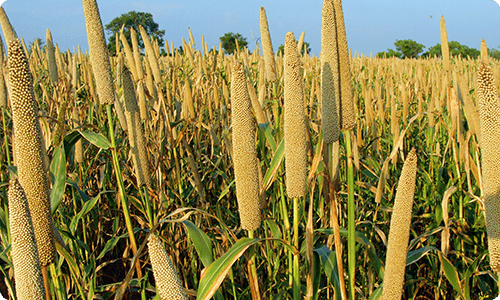 There are many different varieties of millet grown around the world and the most common is pennisetum glaucum, or pearl millet. These cereal crops are used to create alcohol, flour, bread, porridge, and cereal. The nutritional contents found in millet are protein, amino acids, starch, vitamin B, calcium, iron, potassium, zinc, essential fats, and fiber.
There are many different varieties of millet grown around the world and the most common is pennisetum glaucum, or pearl millet. These cereal crops are used to create alcohol, flour, bread, porridge, and cereal. The nutritional contents found in millet are protein, amino acids, starch, vitamin B, calcium, iron, potassium, zinc, essential fats, and fiber.
 A type of cereal grain, oats are a favorite amongst mankind, especially when it comes to breakfast. They are commonly used to make oatmeal, flour, cakes, cookies, and cereal. Of all the cereal grains, oats have the most protein and the lowest carbohydrates.
A type of cereal grain, oats are a favorite amongst mankind, especially when it comes to breakfast. They are commonly used to make oatmeal, flour, cakes, cookies, and cereal. Of all the cereal grains, oats have the most protein and the lowest carbohydrates. 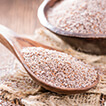
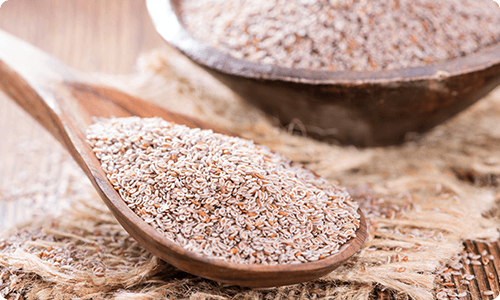 Psyllium is an edible fiber that is one hundred percent natural. It is a key addition to a healthy diet, especially for people struggling with high cholesterol. Psyllium is a soluble fiber, meaning it is able to pass through the digestive system without being completely broken down or absorbed.
Psyllium is an edible fiber that is one hundred percent natural. It is a key addition to a healthy diet, especially for people struggling with high cholesterol. Psyllium is a soluble fiber, meaning it is able to pass through the digestive system without being completely broken down or absorbed. 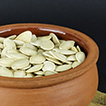
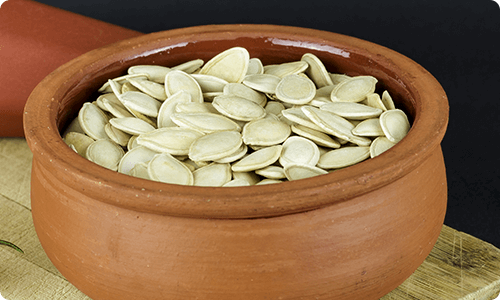 Available year-round, these oval, edible seeds scooped from pumpkins have long been a valued source of nutrients. These seeds are a common ingredient in Mexican cuisine and can also be eaten as a snack raw or roasted. Containing remarkable levels of copper, iron, magnesium, manganese, phosphorus, protein, vitamin A, vitamin B, and zinc, pumpkin seeds are a phenomenal health food. They are also high in fiber, boosting the fiber intake of anyone who consumes them.
Available year-round, these oval, edible seeds scooped from pumpkins have long been a valued source of nutrients. These seeds are a common ingredient in Mexican cuisine and can also be eaten as a snack raw or roasted. Containing remarkable levels of copper, iron, magnesium, manganese, phosphorus, protein, vitamin A, vitamin B, and zinc, pumpkin seeds are a phenomenal health food. They are also high in fiber, boosting the fiber intake of anyone who consumes them.
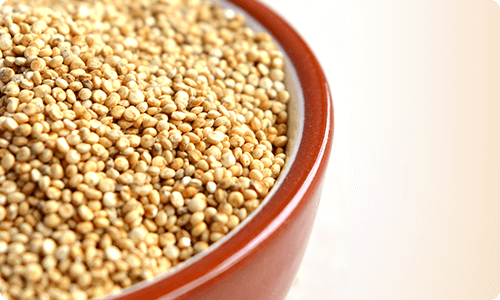 A cereal crop primarily grown for its edible seeds, quinoa is a highly popular food source in America, Canada, China, and Europe. Quinoa is most commonly used as a rice substitute and is also ground up into powder or flower flour to create bread, cereal flakes, and chips. Quinoa is loaded with protein, fiber, folate, vital amino acids, vitamin B, thiamin, manganese, magnesium, phosphorus, and copper.
A cereal crop primarily grown for its edible seeds, quinoa is a highly popular food source in America, Canada, China, and Europe. Quinoa is most commonly used as a rice substitute and is also ground up into powder or flower flour to create bread, cereal flakes, and chips. Quinoa is loaded with protein, fiber, folate, vital amino acids, vitamin B, thiamin, manganese, magnesium, phosphorus, and copper. 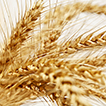
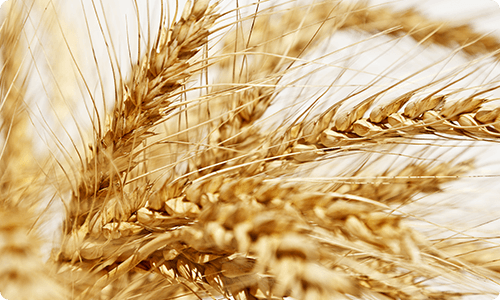 Able to grow in conditions too wet or too cold for other grains, rye is one of the most consumed cereal crops in the world. It has many similar applications to barley and wheat and is used in products such as bread, flour, whiskey, vodkas, and rolled rye. Containing dietary fiber, protein, vitamin B, manganese, selenium, phosphorus, and magnesium, rye has much nutritional value.
Able to grow in conditions too wet or too cold for other grains, rye is one of the most consumed cereal crops in the world. It has many similar applications to barley and wheat and is used in products such as bread, flour, whiskey, vodkas, and rolled rye. Containing dietary fiber, protein, vitamin B, manganese, selenium, phosphorus, and magnesium, rye has much nutritional value. 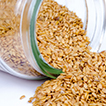
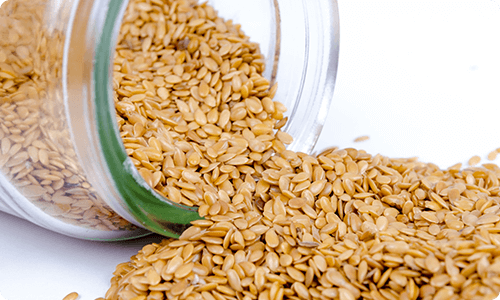 Also known as Sesamum Indicum, sesame seeds are oilseed crops that have been cultivated over the last 3,500 years. Sesame seeds are incredibly resilient and able to grow in places where many other crops cannot. It is a common ingredient in dishes across the globe such as bread meals, soups, crackers, and meat cuisines. Sesame seeds are packed with dietary fiber, protein, vitamin B, copper, manganese, calcium, and magnesium.
Also known as Sesamum Indicum, sesame seeds are oilseed crops that have been cultivated over the last 3,500 years. Sesame seeds are incredibly resilient and able to grow in places where many other crops cannot. It is a common ingredient in dishes across the globe such as bread meals, soups, crackers, and meat cuisines. Sesame seeds are packed with dietary fiber, protein, vitamin B, copper, manganese, calcium, and magnesium. 
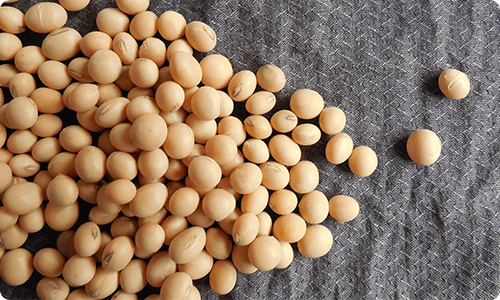 Also known as soya beans, these are a species of legumes native to East Asia and grown throughout the world. Food products from soy include vegetable protein, soy vegetable oil, soy milk, soy sauce and tofu. Soybeans are packed with dietary fiber, vitamin K, vitamin B, manganese, iron, phosphorus, and magnesium. What is most notable about soybeans is the large amount of protein they have, making them a desirable protein source for vegetarians and vegans.
Also known as soya beans, these are a species of legumes native to East Asia and grown throughout the world. Food products from soy include vegetable protein, soy vegetable oil, soy milk, soy sauce and tofu. Soybeans are packed with dietary fiber, vitamin K, vitamin B, manganese, iron, phosphorus, and magnesium. What is most notable about soybeans is the large amount of protein they have, making them a desirable protein source for vegetarians and vegans.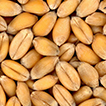
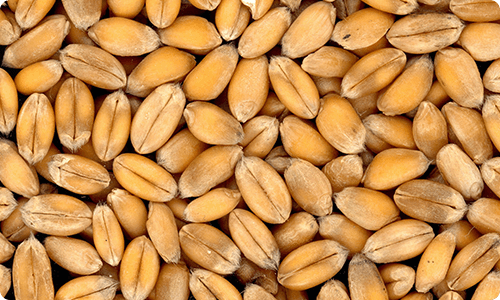 The closely related cousin of wheat, spelt is one of the oldest crops to be cultivated in human history. Also known as hulled wheat or dinkel wheat, it tastes like wheat and behaves very similarly when baking breads with it. Spelt is packed with protein, fiber, iron, magnesium, potassium, copper, folic acid, manganese, niacin, phosphorous, selenium, thiamin, vitamin B, and zinc. It also contains gluten, making it unfit for people with gluten-related disorders.
The closely related cousin of wheat, spelt is one of the oldest crops to be cultivated in human history. Also known as hulled wheat or dinkel wheat, it tastes like wheat and behaves very similarly when baking breads with it. Spelt is packed with protein, fiber, iron, magnesium, potassium, copper, folic acid, manganese, niacin, phosphorous, selenium, thiamin, vitamin B, and zinc. It also contains gluten, making it unfit for people with gluten-related disorders.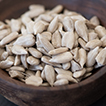
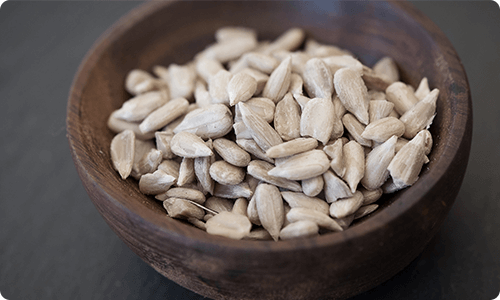 Known as the fruit of the sunflower, sunflower seeds are the edible seed of this daisy family flower. These seeds are most commonly eaten whole as a snack roasted, dusted, or raw. They can also be used as a garnishment for various dishes such as salads, sandwiches, and cookies. Sunflower seeds are a rich source of copper, magnesium, manganese, phosphorus, selenium, thiamin, vitamin B, and vitamin E.
Known as the fruit of the sunflower, sunflower seeds are the edible seed of this daisy family flower. These seeds are most commonly eaten whole as a snack roasted, dusted, or raw. They can also be used as a garnishment for various dishes such as salads, sandwiches, and cookies. Sunflower seeds are a rich source of copper, magnesium, manganese, phosphorus, selenium, thiamin, vitamin B, and vitamin E.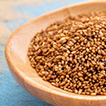
 Largely grown in Ethiopia, India, and Australia, teff is used similarly in cooking to millet and quinoa. Because the seed is small, teff cooks much faster than other grains and can be used to make porridge and alcoholic beverages. Another use for teff is in gluten-free baked goods such as bread, pie crusts, and cookies. It can also be eaten whole baked, boiled, or steamed.
Largely grown in Ethiopia, India, and Australia, teff is used similarly in cooking to millet and quinoa. Because the seed is small, teff cooks much faster than other grains and can be used to make porridge and alcoholic beverages. Another use for teff is in gluten-free baked goods such as bread, pie crusts, and cookies. It can also be eaten whole baked, boiled, or steamed.
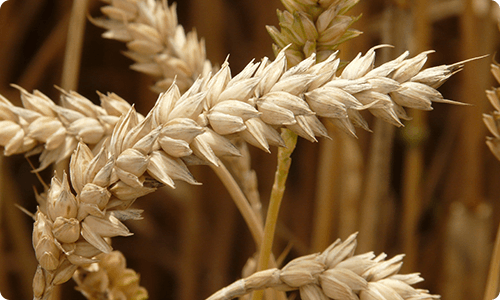 Now grown worldwide, wheat is one of the most cultivated grains. It is most commonly used to make bread but is also used in cakes, cereal, cookies, crackers, pasta, pies, and more. Wheat contains several nutrients, vitamins, and minerals such as protein, niacin, manganese, and more. Wheat is the cereal grain with the highest protein content.
Now grown worldwide, wheat is one of the most cultivated grains. It is most commonly used to make bread but is also used in cakes, cereal, cookies, crackers, pasta, pies, and more. Wheat contains several nutrients, vitamins, and minerals such as protein, niacin, manganese, and more. Wheat is the cereal grain with the highest protein content.